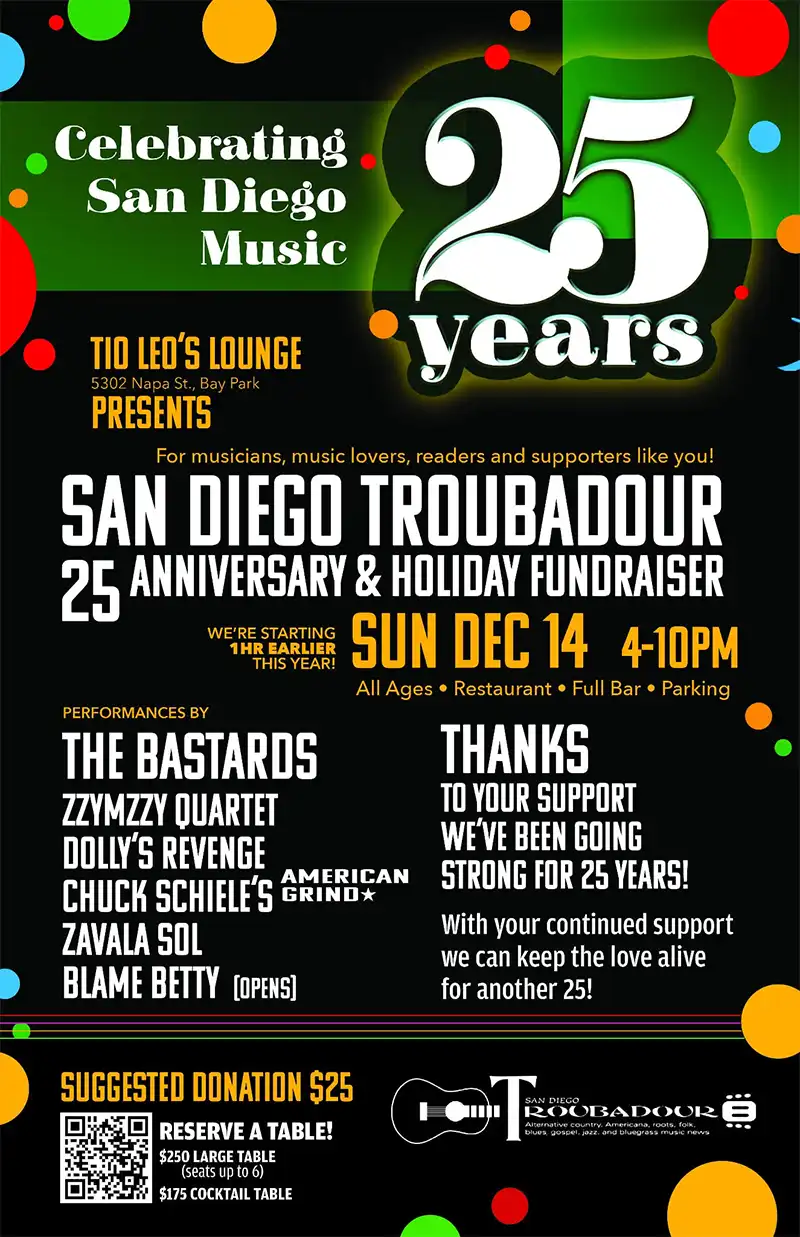Recordially, Lou Curtiss
How I got My Start
It was that big pile of of 78 rpm records my folks had that started things off. Both Mom and Dad liked country and western and I grew up with the likes of Gene Autry, Roy Acuff, the Sons of the Pioneers, Hank Snow, back to Frank Marvin and Haywire Mac and as recent as Hank Williams.
After I came to California in 1952 my Dad bought me an old Silvertone guitar and my uncle Tony gave me me a Gretsch (so I had two guitars). It was natural to start learning songs. Pretty soon I was sittting in on open mics and doing a lot of partys. I first played Johnny Cash songs with Dexter Sykes (“Give my love to Rose” is still a favorite). After I moved to SDSU I teamed with Terry Huston (we called ourselves the Lysaders). We did a lot of Weavers stuff, some striped shirt stuff, and, of course, country. We did TV (a daytime show on KGTV) and started doing open mikes and occaional gigs at local coffee houses like the Upper Cellar, and Circe’s Cup. We even did a parade on a Newspaper Float singing Vern Partlow’s “Newspapermen Are Such Interesting People” over a five-mile parade route. After about a year we drifted apart and the Lysaders were no more. I never did know what LYSADER meant. Terry says I made it up, I blamed it on him often enough. I think the reason was probably that newspaper that called us THE LICE EATERS
I met Curt Bouterse in an African History class and we talked about forming a Folksong Society. We did that in 1962. The original group included Nicolette Axton, Jerry Houck, Clarke Powell, Keren Williams, Wayne Strongberg, Warren Strongberg, Jack Van Olst, Gillian Theobald, and several others. We met, instruments in hand, in the Rose Arbor behind Scripps Cottage at SDSU
Most of the FSS didn’t want to do gigs outside. They were content with the Rose Arbor once a week. Thus, the Red Mountain Ramblers was born: Dennis Squier, Alan Glasscoe, Ned Getline, Peggy Fallon, Patty Prickett, Larry Fumo, and Rex Morris. We held down a weekly gig at The End coffeehouse on Grand Ave. in Pacific Beach for damn near eight months. This time it all ended with a summer walk-around by about two-thirds of the band. I had a Long Day’s Journey into Texas. which I’ll talk about later.
The Greyhound pulled into the station just in time to get registered and meet a bunch of new band members. This new band was titled the OLD RELIABLE JUG AND STRING BAND and members included Virginia Chodas (who I would later marry), Stan Smith, Tim Smith, John German, Pat Griffith, and Mike Tozer. Ray Bierl added AND JANITORIAL SERVICE to the title and we liked it and kept it. Like all college bands in the summer comes other things to do. With the fall Virginia (we’re now married) and I teamed also with Brian Steeger at the FAMOUS KRUDD FAMILY. Six Months later we teamed with Joe Gwaltney as the LOWER WASHINGTON STREET WOOLTHUMPERS. Six more months and and were with W. Bruce Reid as the OLD HOME TOWN BAND. Since then we’ve pretty much remained a duo. I guess we’ll stay that way.
How Sam Chatmon Was Found
In the beginning I was on a collecting trip with a friend looking for records and for the folks that made them. We wandered into Hollendale, Mississippi, looking for Bo Carter, but found that Bo was in a hospital in Memphis, Tennessee, and his brother Sam had gone to be with him. We talked to a friend of Sam’s known as Eugene Powell (who had made records with Bo Carter under the name of Sonny Boy Nelson). We left Hollendale having missed Sam. Later Sam mentioned our visit to Ken Swerlias a long-time record collector who followed shortly behind us, also looking for Bo Carter. Ken invited Sam out to San Diego for the first of the summers that would last from 1957 through 1982. During that time Sam lived with Ken Swerlias’ family, and I was the closest thing he had to a manager. Sam appeared at my store (Folk Arts Rare Records) and the Heritage Coffee House here in town and at the Blue Beet in Newport Beach pretty regularly. He also did concerts and festivals all around Southern California. He made several LP records, including one in Ken’s living room by John Fahey and myself, which came out on Blue Goose (now a rare collectable); another called Sam Chatmon’s Advice on Rounder Records, an LP still available on the Flying Fish label. Along the way, there was an album that came out in Italy titled Hollendale Blues. Sam was a beloved musical character and since his death in 1983, an important part of San Diego is lost.
Recordially,
Lou Curtiss






